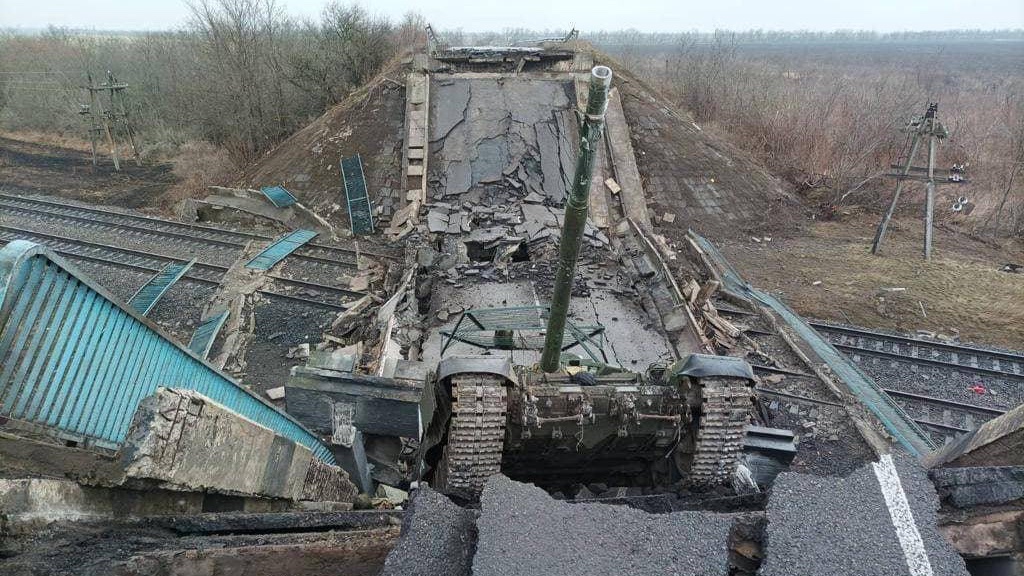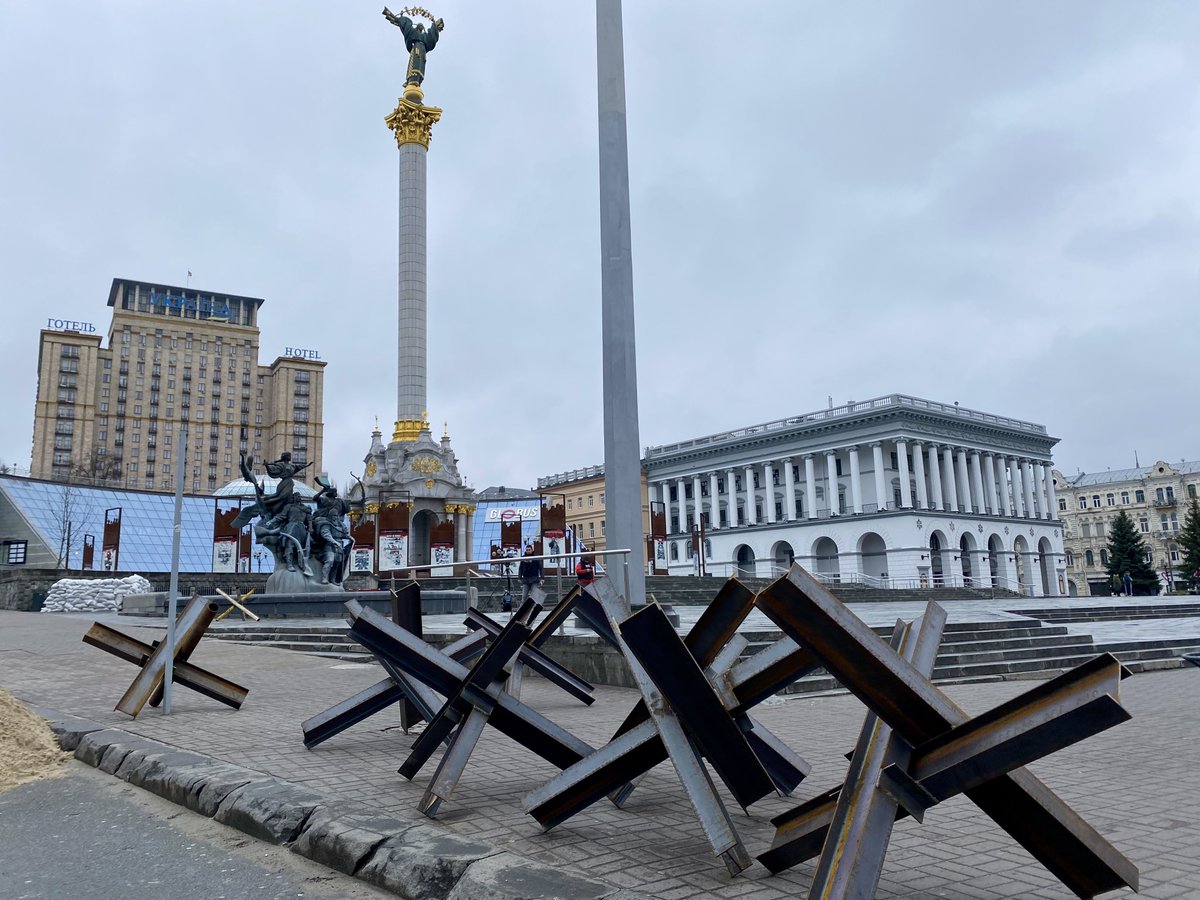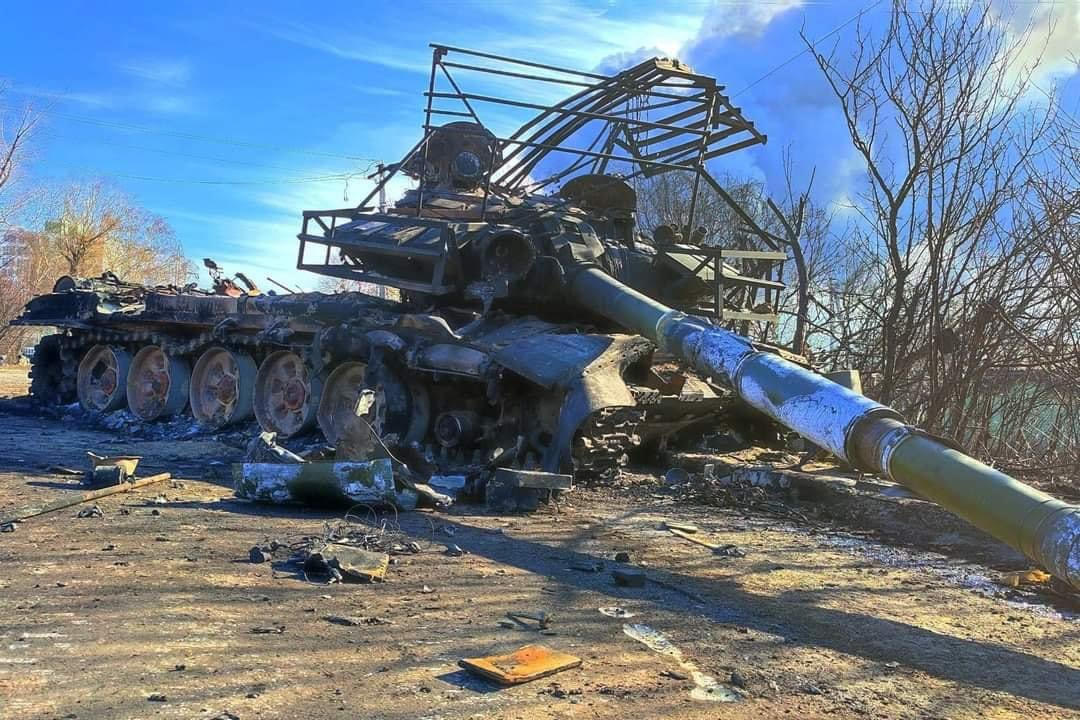
Seven days since the Russian conquest of Ukraine began. In the past 24 hours, we have seen limited Russian progress in the north and east, a huge traffic jam, and some progress in the south. My 7th thread will focus on the battle of the cities. 1/25 (Image via @IAPonomarenko) 

2/25 As always, a shout out to those reporting on the Russian invasion. This includes @KofmanMichael @maxseddon @IAPonomarenko @RALee85 @shashj @DanLamothe @ikhurshudyan @McFaul @defenceHQ @thestudyofwar @OrlaGuerin @siobahn_ogrady @lawdavf among others. Please follow them all!
3/25 As the Russians apply greater mass and firepower to surround, and attempt to seize, several Ukrainian cities, it is worth reflecting on what contemporary urban warfare looks like. edition.cnn.com/2022/03/02/pol…
4/25 Military forces avoid city fighting. This is due to the inherent complexity of urban terrain, difficulty in coordinating forces (on the ground & from the air), & the channelling effect of buildings - every street is a zone of death for soldiers.mwi.usma.edu/think-army-can…
5/25 Cities are also large and can absorb tens of thousands of soldiers to very little effect. They are enormously expensive in logistics, precision weapons, and casualties. For example, Kyiv is the size of Canberra (Australia) or San Diego (US).
6/25 Importantly, cities are where people live. They are thriving, evolving centres of human existence & dense information environments. If military operations are to be conducted in these locations, there is the potential for massive loss of life among the inhabitants.
7/25 For professional soldiers, the prospect of civilian casualties is difficult. At heart, a soldier’s job is to fight for our citizens and the defenceless. The Russians, at least in the #Ukraine, do not appear to share this mindset.
8/25 But wars are ultimately political. They are fought & decided where people are. And in the 21st century, most people live in urban areas. As I wrote in #WarTransformed, higher urban populations mean that military operations are much more likely to take place in cities.
9/25 As @AntBruceKing has described it more succinctly, ‘urban combat has become a central,
maybe even the defining, form of warfare in the twenty-first century. Today, it seems all but inevitable that they will fight in cities.” (Image from @WarInstitute)
maybe even the defining, form of warfare in the twenty-first century. Today, it seems all but inevitable that they will fight in cities.” (Image from @WarInstitute)

10/25 To capture a city, the Russians will need to surround it. This prevents supplies getting into the city to support the defenders. Unfortunately, it also starves civilians and can restrict medical and humanitarian evacuations.
11/25 And in surrounding the city, the Russians must also stop the Ukrainians ‘breaking in’ to provide reinforcements to the city. So, in effect, this force dedicated to surrounding the city must have a ring facing towards the city and a ring of troops facing out.
12/25 And they all need to be logistically supported (which the Russians have not been stars at so far).
13/25 Then, the Russians will need to somehow seize the cities. They must do so against a Ukrainian Army and a civilian populace who have so far shown courage, a huge amount of innovation, and a willingness to fight for their nation.
14/25 The Ukrainian defenders have a long list of modern urban battles to inform their tactics and the overall scheme of defence of their cities. These include Berlin (1945), Seoul (1950), Grozny (1995), Baghdad (2003-2007), Mosul (2016-2017), Raqqa (2017) & Marawi (2017).
15/25 These defenders have lots of options in defending their cities. @SpencerGuard and @JaysonGeroux have written a fine precis on defending modern cities here:mwi.usma.edu/defending-the-…
16/25 We'll see an escalation in violence as the Russians prosecute this Battle of the Cities. We have seen their growing desperation for tactical success through their use of artillery, rockets and possibly thermobaric weapons in & around civilian areas in the past 24 hours. 

17/25 @JoelGunter from @bbcworld quotes the Mayor of Mariupol – “One district of the city is nearly totally destroyed…We cannot count the number of victims there, but we believe at least hundreds of people are dead…we are near to a humanitarian catastrophe.”
18/25 In some respects, this is a return of the Russian Army to what has been its historically preferred mode of war – mass fire power. As @KofmanMichael recently wrote, the “Russian mil is an artillery army first, and it has used a fraction of its available fires thus far”. 

19/25 Another fine analysis of the challenges both the Russians and Ukrainians will face in the battle of the cities in the coming days is from @LanceDavies11 at @RUSI rusi.org/explore-our-re…
20/25 As the Russians continue their campaign to capture cities by destroying them, we will also see an intensification in ruthlessness from both sides.
21/25 As the @KyivIndepdent reports today, “Ukrainian special forces will no longer capture Russian artillerymen. The command of Ukraine’s Special Operations Forces has warned it will kill captured Russian artillerymen in response to their brutal shelling of civilians & cities.”
22/25 It must be pointed out that this would probably go against the spirit and the letter of the Geneva Convention relative to the Treatment of Prisoners of War. ohchr.org/EN/Professiona…
23/25 In conclusion, @lawdavf has written that, “Putin has now been forced to move to Plan C…because there is an improvised, ad hoc aspect to what is going on now, it would be unwise to be too definite about what is to come.”
24/25 This ‘improvised, ad hoc’ Russian campaign against Ukrainian cities and their inhabitants in the coming days will probably be the most brutal and destructive warfare in Europe since 1945. We should steel ourselves for the humanitarian tragedy that is going to unfold. 

25/25 My observations, part 7, ends. Thank you to the many followers, old and new, have been reading and sharing these posts. I hope they have provided useful insights.
• • •
Missing some Tweet in this thread? You can try to
force a refresh











